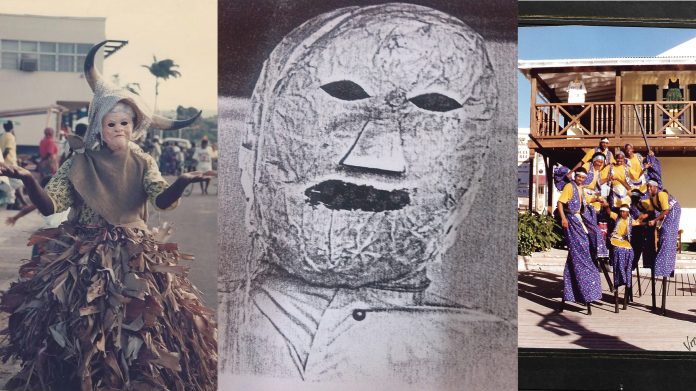By Latrishka Thomas
Christmas in the 21st century wanes in comparison to that of the early 20th century where persons were not guilted by gift-giving and the holiday was not commercialised.
Prior to the 1970s, Christmas in Antigua and Barbuda was as cultural as it was colourful.
It was steeped in activities, which are centuries old, from the island’s European and African heritage.
About three weeks before Christmas Day, carol singers would go around town and the villages carrying what was called a ‘Carol Tree’. It was made of wood and had several arms from which Japanese lanterns swung.
Back then, Christmas greetings were done by the carolers who would go door to door of homes -which were typically decorated with sprigs of fragrant allspice called pimento, bay leaf and cherry branches – and recite these words:
“Goodnight to the inmates of this peaceful residence,
We are the choristers going around celebrating the Lord’s birth,
Christmas is now (seven) days off,
We wish you health,
We wish you strength,
We wish you golden store,
We wish you heaven after death,
What can we wish you more?
God save the Queen!”
And as far back as the 1940s or earlier masqueraders would fill the streets of St John’s revelling to music of the time.
Another time-honoured custom was to make a new outfit marking three days of Christmas.
Some popular Christmas ‘characters’ would also parade the streets.
‘Long ghosts’ were 12ft-tall masked figures on stilts who peeped into bedroom windows or on the galleries of residents’ homes looking for Christmas donations. If donations were not made, a string inside the ‘ghost’ was pulled which made the arms wave about in a sinister way to indicate dissatisfaction.
The ‘John Bull’ dominated the festivities as a grotesque figure dressed in old clothes and dry banana leaves or crocus bags with animal horns. They incited both fright and excitement in observers.
Acrobats called ‘play actors’ would also show off to girls by leaping over sharpened garden forks. They would be dressed in close-fitting trousers about an inch above the knee, edged with lace. Over this was a skirt also trimmed with lace.
They performed other astounding feats by jumping over the backs of six or seven persons crouching on all fours to the accompaniment of fife and drum, pipe brass, triangles and grater bands.
Jazz bands were a common sight up to the late 1950s. The first jazz band on the road was the Lyric Band, formed by the Antigua Volunteer Defence Force around 1921. They dressed in clown’s clothes in red and green. Harry Henry, Harry Murphy, Bertie Gonsalves, Clem Da Silva, Vere Griffith and Coxie Coates were in this band.
The food enjoyed back then also differed slightly. Drinks included fermented Christmas bush, ginger and water molasses and food was a choice between mutton, fowl, pork, turkey, duck, ham, cakes and tarts, but the poor usually ate pork and fried dumplings.
Information courtesy the Museum of Antigua and Barbuda, Oscar Mason and the late Dan Mendes.

